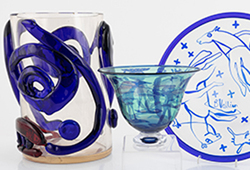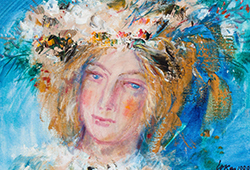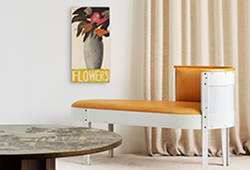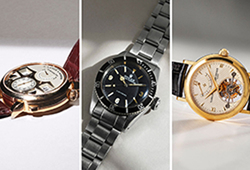John Bauer
”Here are the rest of my clothes”
Signed John Bauer. Watercolour and gouache on paper 30.4 x 34.1 cm. On verso sketch in pencil for "Lena liten och guldnyckeln" in "Guldnycklarna" by W. E. Björck, published in "Bland Tomtar och Troll", 1915. Probably original picture frame.
Alkuperä - Provenienssi
Talfourd P. Linn (1854-1930), Columbus, Ohio, USA, acquired either in 1915 at "The World Fair Exhibition" in San Francisco or 1916 in Indianapolis in connection with "The Swedish Exhibition";
by descent to his niece Jane Allen Linn (1910-2008) married in 1938 to Kenneth Marion Gale (1908-1990);
subsequently by descent until 2016.
Näyttelyt
Konstnärshuset, Stockholm, "John Bauer. Sigge Bergström. Utställning", 2-5 November 1913, in the section ”Teckningar till Bland Tomtar o. Troll 1912” (Drawings/illustrations for Bland Tomtar o. Troll 1912), no. 14 (under the title ”Den lilla prinsessan och örnen”).
(Possibly) San Francisco, The World Fair Exhibition, 1915.
The Indianapolis Institute of Arts, Indianpolis, "The Swedish Exhibition" ("Exhibition of contemporary Swedish art, 1916"), 6 December 1916 - 1 January 1917, no. 18 (under the title ”Here are the rest of my clothes”, lent by Talfourd P. Linn, Columbus, Ohio).
The Art Institute of Chicago, Chicago, "The Second International Water Color Exhibition", 15 April - 21 May 1922, no. 366 (under the title ”Here are the rest of my clothes”, lent by Talfourd P. Linn, Columbus, Ohio), illustrated full page in the catalogue.
Kirjallisuus
STUDIES:
Per Bjurström, Gunnar Lindqvist et al., "Bauer. En konstnär och hans sagovärld", 1981, compare sketch book page with studies for illustrations in "Oskuldens vandring" amongst others ”Här har du allt, som återstår av mina kläder” ("Here are the rest of my clothes"), illustrated in colour p. 137.
ENGRAVED WORKS:
Compare lithograph by John Bauer, "Här har du allt, som återstår af mina kläder" (105 x 90 mm.) from the portfolio "Troll", 1915.
COMPARATIVE LITERATURE:
H. Nyblom, 'Oskuldens vandring', in " 'Bland Tomtar och Troll'. En samling sagor med teckningar av John Bauer", editor Cyrus Granér, No. 6, Åhlén & Åkerlunds Förlag, Göteborg (Gothenburg, Sweden) & Chicago, 1912, pp. 1-13, illustrated p. 12.
H. Schiller, "John Bauer. Sagotecknaren", Sveriges Allmänna Konstförenings publikation XLIV, 1935, p. 139, compare. ill. p. 133.
H. Schiller, "John Bauer, Sagotecknaren", 1942, p. 143, compare. ill. p. 137.
"Bauer. En konstnär och hans sagovärld", Exhibition Catalogue, Nationalmuseum, Stockholm and Jönköpings läns museum, 1981, mentioned pp. 110-111, ill. p. 110.
H. Holmberg, 'Från folksaga till konstsaga', in "John Bauer: En konstnär och hans sagovärld", 1982, p. 52.
H. Holmberg, "Från prins hatt till prins mio. Om sagogenrens utveckling", 1988, pp. 37-38.
E. Nordlinder, "Sekelskiftets svenska konstsaga och sagodiktaren Helena Nyblom", 1991, p. 195.
E. Söderberg, 'Om barn, björnar och barndomens diskurser', in "Tidskrift för Litteraturkunskap", No. 1, 2009, pp. 10-11.
M. Andersson, "Nakenhet och naivitet: Helena Nybloms 'Oskuldens vandring' ", in "Horisont", No. 1, 2010, pp. 30-33.
Muut tiedot
.
Taiteilija
John Bauer was born in 1882 and was a Swedish artist, primarily renowned for his paintings and illustrations in the early editions of the fairy tale collection "Bland tomtar och troll”. Thanks to his magical illustrations of princesses, trolls, and giants, Bauer has significantly influenced our perception of creatures and mythical figures in traditional Swedish stories and Nordic folklore.
Bauer grew up in Jönköping, and a large part of his artistry was inspired by the mystical forests of Småland, where trolls and other beings seemed to emerge from the rocky outcrops. During his years of study, he was fascinated by early German and Italian painting but soon returned to the Swedish fairytale forest. At the Royal Swedish Academy of Fine Arts, he met his future wife, Esther Ellqvist, who often posed as a model and served as inspiration for the princess Tuvstarr in Bauer's works.
Most of Bauer's paintings are created using watercolors, although he has also produced some using oil. By the 1910s, thanks to his fairy tale paintings, Bauer was already an established and beloved artist when he chose to conclude his role as a fairy tale illustrator. In his final years, he explored other imaginative expressions that would shape Bauer's last works, such as "The Dancing Nymphs" and "Blue Eva". John Bauer's final significant painting was created for the auditorium at Karlskrona Girls' School in 1917, an oil painting depicting the goddess Freja, with his wife Esther as a model.
The entire Bauer-Ellqvist family died in a boat accident when the steamer Per Brahe sank during an autumn storm on Vättern on November 20, 1918.






























































